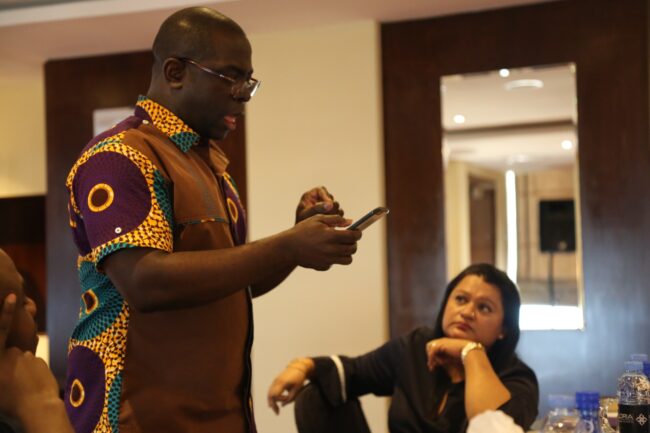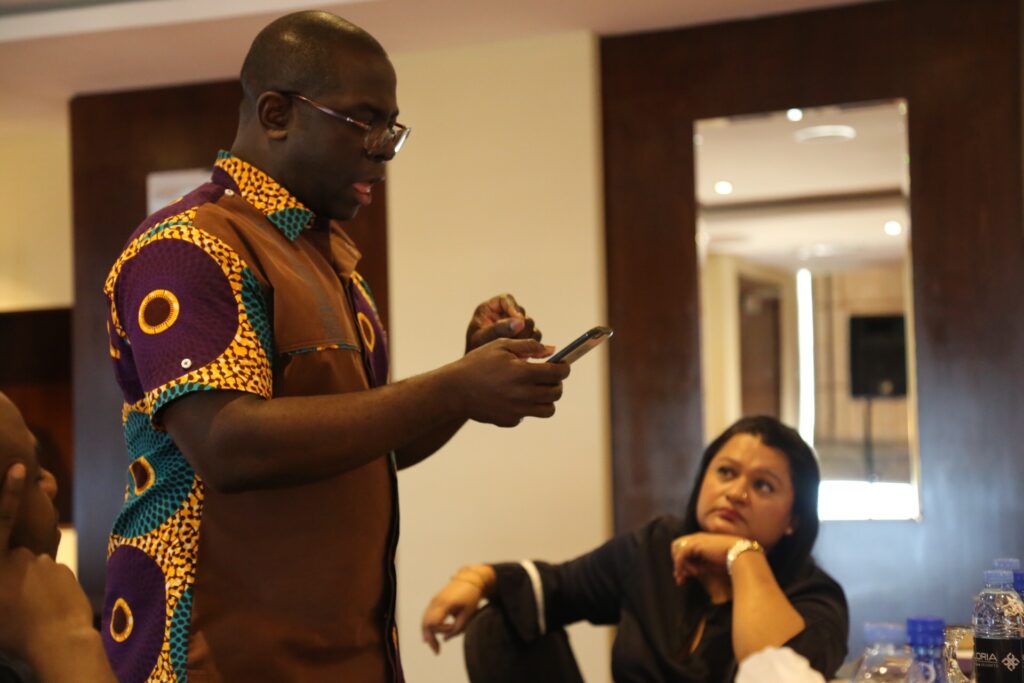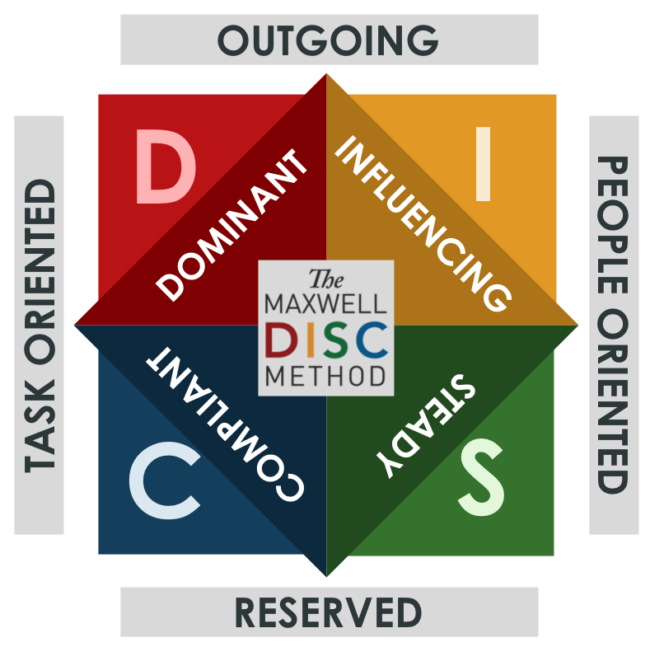
Balanced Leadership Diet
Pease porridge hot, pease porridge cold,
Pease porridge in the pot, nine days old;
Some like it hot, some like it cold,
Some like it in the pot, nine days old.
That ‘Pease Porridge’ Mother Goose nursery rhyme is a succinct summary of the biases, tendencies, idiosyncrasies and preferences we all have such that without a certain degree of intentionality we might never do one thing or the other at all because it simply isn’t my thing.
In my medical school days, I found it über interesting that each specialist professor would talk about their field with such passion and all-importance as if the whole body were an eye or liver or skin or heart or bones or whatever. No matter the medical condition, they would find a cause or effect related to their darling body part. In fact, we believed there were consultants who could literally hear and spot diagnose a heart murmur without a stethoscope just by walking into the consulting room!
In leader formation, I have also found that depending on the trainer or coach’s personal preferences, biases or sweet spot, they zoom in on one area (eg. character development or strategy or organizational culture) to the detriment of other equally important aspects of leader formation.
During my Master of Arts in Global Leadership at Fuller, I encountered a schema for the programme which I fell in love with. I have since adapted it as ‘7 Inputs & Outcomes of Leader Formation’ at YAW PERBI, providing a framework and basis, process and end product for our leader formation, whether via coaching or consulting, in our authoring of resources, and certainly in our speaking and training. Here it is (diagram below).
THE SEVEN LEADERSHIP FOOD GROUPS
Your body needs a nutritional balance of carbohydrates and proteins, fats/oils, minerals and vitamins. This is accomplished through food groups like grains, milk products, meats, fruits and vegetables. Similarly, your head, heart and hands require these seven ‘food groups’ to nourish and form the basis of leader development:
1. Classically Informed Practice: This is the origin and objective of leadership. Classical means ancient. Fuller’s original is Biblically-informed for obvious reasons but while that is true for us at YAW PERBI, we also include Ancient African, Asian and Greek/Latin literature (Aristotle, Socrates, Plato). The point of rooting leader formation in a meta narrative is that many people consider the whole area of leadership/leadership development as a creation of Western business schools and or even the modern American management industry but no. The art and science of leadership dates back 6,000 years in scripture, and with the likes of Akhenaten, King of Egypt (1380-1334 BC), Moses (1391-1271 BC), Lao Tzu (604-531), Cyrus the Great (600-530BC), Confucius (551-479 BC), Plato (427-347 B), Aristotle (384-322 BC) and Cicero (106-43 BC) throughout history.
2. Character Development: Constitutes the heart of leadership. At the end of the day, the heart of the matter is the matter of the heart. As I’ve heard it said time and again, charisma without character is a disaster waiting to happen. Invariably it does. That character is the bedrock of authentic and long-lasting leadership cannot be overemphasized.
3. Reflective Lifestyle: Herein lies the rhythm of leadership. This isn’t one of Fuller’s original six. I included it after a meeting with a group of senior leaders mentoring emerging leaders in Africa. Dr. Joshua Bogunjoku, my senior medical colleague and big brother who is the international director for SIM really passionately brought the necessity for stillness, silence, introspection and such to the fore to which I agreed and couched this indispensable ingredient.
4. Missional Community: This is the goal of leadership. Leadership is about serving and influencing a group of people (community) towards a certain noble purpose (cause). That cause or mission, according to my worldview, is a subset of a meta narrative known as the missio Dei that must ultimately bring glory to the God of the universe, benefit creation (people being chief among creation) and vanquish evil. Without a flourishing community on this vital three-fold mission, what the heck is leadership for?
5. Global Diversity: It goes without saying that we live in a global village, made even tighter still by the meta internet connectivity in this Covid-19 era. Not even spatial distancing can change the closeness. It is not uncommon for leaders today to have team members strewn across different timezones and having worldview, cultural beliefs and ethnic values that are very different. Global diversity is the context of leadership today.
6. Lifelong Learning in a Diverse Community: Herein lies the continuing development of leadership. As you already know, the present continues learning of a leader gives them the right and means to keep leading. The day we stop learning, we stop leading. Lifelong learning is catalyzed in diverse community, physical or virtual.
7. Organizational Dynamics: This is how leadership is implemented. I once met a former Fortune 500 company CEO near Chicago who described companies as ‘a necessary evil.’ At the end of the day, as long as two or more people come together, we need some sort of ‘organization’ to make things happen. It’s wonderful to have a great heart, but without the cutting edge knowledge and skillful hands to steer organizations with all their dynamics, these great ideas and causes won’t last very long.
CONCLUSION
For the last decade I have believed in and practiced going deep with leaders rather than merely going wide (mass production). I believe in Maxwell’s Law of Process, that leadership is built daily; not in day. Consequently, whoever walks long enough with us at YAW PERBI will invariably realize that they have been well-fed and well-formed holistically, with each of the above seven leadership food groups amply supplied, digested and fleshed out.

Not right or wrong; just different.
As Jesus and his disciples were on their way, he came to a village where a woman named Martha opened her home to him. She had a sister called Mary, who sat at the Lord’s feet listening to what he said. But Martha was distracted by all the preparations that had to be made. She came to him and asked, “Lord, don’t you care that my sister has left me to do the work by myself? Tell her to help me!”
“Martha, Martha,” the Lord answered, “you are worried and upset about many things, but few things are needed—or indeed only one. Mary has chosen what is better, and it will not be taken away from her.” (Luke 10:38-42)
VERTICAL AND HORIZONTAL RELATIONSHIP DYNAMICS
Of course the usual point drawn from the Mary and Martha anecdote is importance of “slowing down for loving union with Jesus,” “being with Jesus rather than doing for Jesus” et. And that is all true. In fact, I have a mentor who suspects that even “if Martha were to sit at the feet of Jesus, she would still be distracted by everything on her mind. Her inner person is touchy, irritable, and anxious” (Peter Scazzero). Granted, this account is about our vertical relationship with God (spirituality) but what about the possibility that these two sisters were wired differently in relating to people (horizontally)?
MARY IS A PEOPLE PERSON; MARTHA IS A PROJECT PERSON
I just finished re-reading the story of Mary and Martha and couldn’t help noticing that these sisters of Lazarus must’ve had very different personalities. Before we assume Mary was spiritual just because she sat at the feet of Jesus listening to him or that Martha was unspiritual just because she was running around choring and checklisting, think again: both were friends of Jesus. They had invited Jesus into their home (if you like, even into their hearts) to sup with them. They were both spiritually connected, so-to-speak.
Martha most likely was a high D or high C, highly task-oriented; while Mary in all probability was a high I or high S, highly people-oriented. Personally, knowing that people are wired differently from me, personality-wise, has ‘cut my sinning in half,’ in the sense that many things I’ve wrongly judged in people as a moral, ethical or even spiritual issue have now proven to be just different, not a matter of right or wrong.
My mentor asked, “in what way(s) did your to-do list, distractibility, or perfectionism keep you from loving and enjoying Jesus or the people around you?” That is is when I noticed I hardly keep in mind that time for tasks often means no time for people (or Jesus for that matter). “Opportunity cost,’ that’s what the economists like my dear wife call it. I’m finding that I need to set fixed goals and fixed hours for tasks and whack them like Martha, so I’m also able to make quality time for people with the rest of my time (not necessarily ‘surplus’ time), to be fully present with Jesus and with people, like Mary.
In fact, often über project-oriented people have to set making time for relationships as a task in order to make it happen. Meanwhile someone needs to tell people-oriented people to also get some work done!
DISCOVER YOUR DISC
Scottish Olympic medalist Eric Liddell said, “I believe God made me for a purpose, but he also made me fast. And when I run I feel His pleasure.” People-oriented and project-oriented folks can both bring God pleasure; they both can impact people for good. Both their being and their doing can please God and bless people.
Everyone reading this has done the DISC personality assessment, I hope. If you haven’t, may I suggest it’s one of the first steps in knowing yourself better so you can have healthier relationships and deeper fulfillment leading a life of significance–and all the while just being yourself. If you need to take it, drop me a note ASAP (yawperbi@gmail.com).





